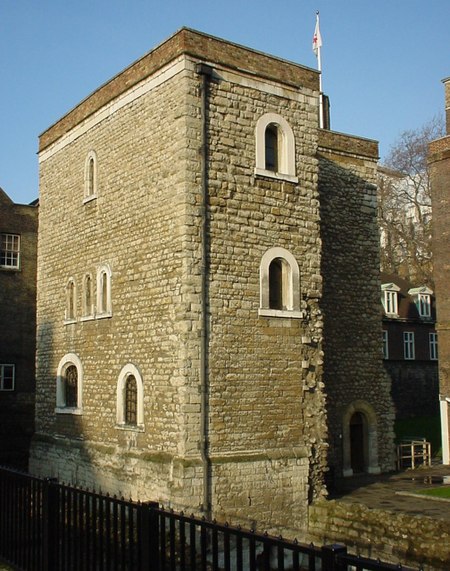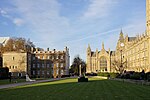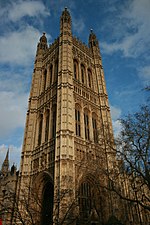Jewel Tower

The Jewel Tower is a 14th-century surviving element of the Palace of Westminster, in London, England. It was built between 1365 and 1366, under the direction of William of Sleaford and Henry de Yevele, to house the personal treasure of King Edward III. The original tower was a three-storey, crenellated stone building which occupied a secluded part of the palace and was protected by a moat linked to the River Thames. The ground floor featured elaborate sculpted vaulting, described by historian Jeremy Ashbee as "an architectural masterpiece". The tower continued to be used for storing the monarch's treasure and personal possessions until 1512, when a fire in the palace caused King Henry VIII to relocate his court to the nearby Palace of Whitehall. At the end of the 16th century the House of Lords began to use the tower to store its parliamentary records, building a house alongside it for the use of the parliamentary clerk, and extensive improvements followed in 1621. The tower continued as the Lords' records office through the 18th century and several renovations were carried out to improve its fire-proofing and comfort, creating the present appearance of the tower. It was one of only four buildings to survive the burning of Parliament in 1834, after which the records were moved to the Victoria Tower, built for the purpose of storing archives, and part of the new neo-Gothic Palace of Westminster. In 1869 the Jewel Tower was taken over by the newly formed Standard Weights and Measures Department, which used it for storing and testing official weights and measures. The rising level of passing vehicular traffic made the tower increasingly unsuitable for this work, and by 1938 the department had abandoned it in favour of other facilities. In 1948 the building was placed into the care of the Ministry of Works, which repaired the damage inflicted to the tower during the Second World War and restored the building extensively, clearing the surrounding area and opening the tower to tourists. Today the Jewel Tower is managed by English Heritage and receives about 30,000 visitors annually.
Excerpt from the Wikipedia article Jewel Tower (License: CC BY-SA 3.0, Authors, Images).Jewel Tower
Abingdon Street, City of Westminster Millbank
Geographical coordinates (GPS) Address External links Nearby Places Show on map
Geographical coordinates (GPS)
| Latitude | Longitude |
|---|---|
| N 51.498417 ° | E -0.126472 ° |
Address
Jewel Tower
Abingdon Street
SW1P 3JY City of Westminster, Millbank
England, United Kingdom
Open on Google Maps









